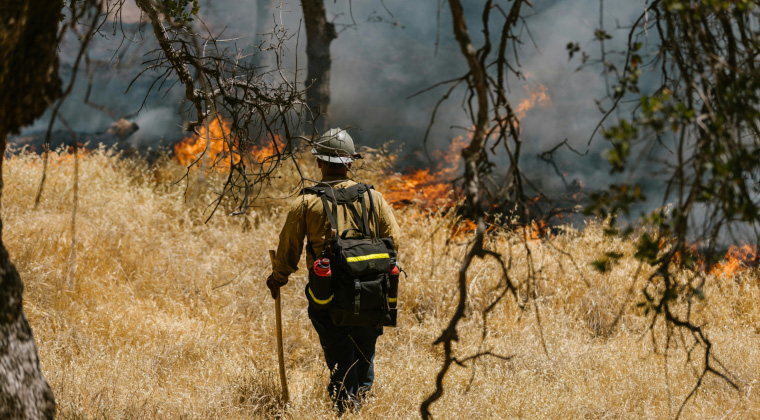Fly Cuenca! Once a dirt runway, Mariscal La Mar Airport makes improvements, plans more flights
Editor’s note: This is the first of a two-part series about Cuenca’s Mariscal La Mar Airport.
By Stephen Vargha
Cuenca has a long history of aviation that began on November 4, 1920, when Italian pilot Elia Liut landed his small twin-engine plane at the Jericó field, in Narancay. That was the first flight over the Andes in Ecuador, traveling from Guayaquil to Cuenca in the El Telégrafo biplane.

Cuenca’s airport opened on April 25, 1941. At that time, it was a dirt runway.
It would be 14 years later before Cuenca would see another plane. On July 8, 1934, the first airport opened. Operated by the government, it was a dirt runway, with a small building that was used as an office.
Two planes, piloted by Luis Mantilla and Cosme Renella, circled over the city that day before landing at the runway.
On April 25, 1941, the dirt runway had been made into a hard surface, allowing for scheduled aeronautical operations to begin. It was the beginning of the public airport at its current location with a Panagra (Pan American-Grace Airways) flight that included Ecuador President Carlos Alberto Arroyo del Río, Minister of Government Carlos Aguilar Vázquez, Minister of Defense Vicente Santisteban Elizalde, and the Vice President of Panagra for Latin America.
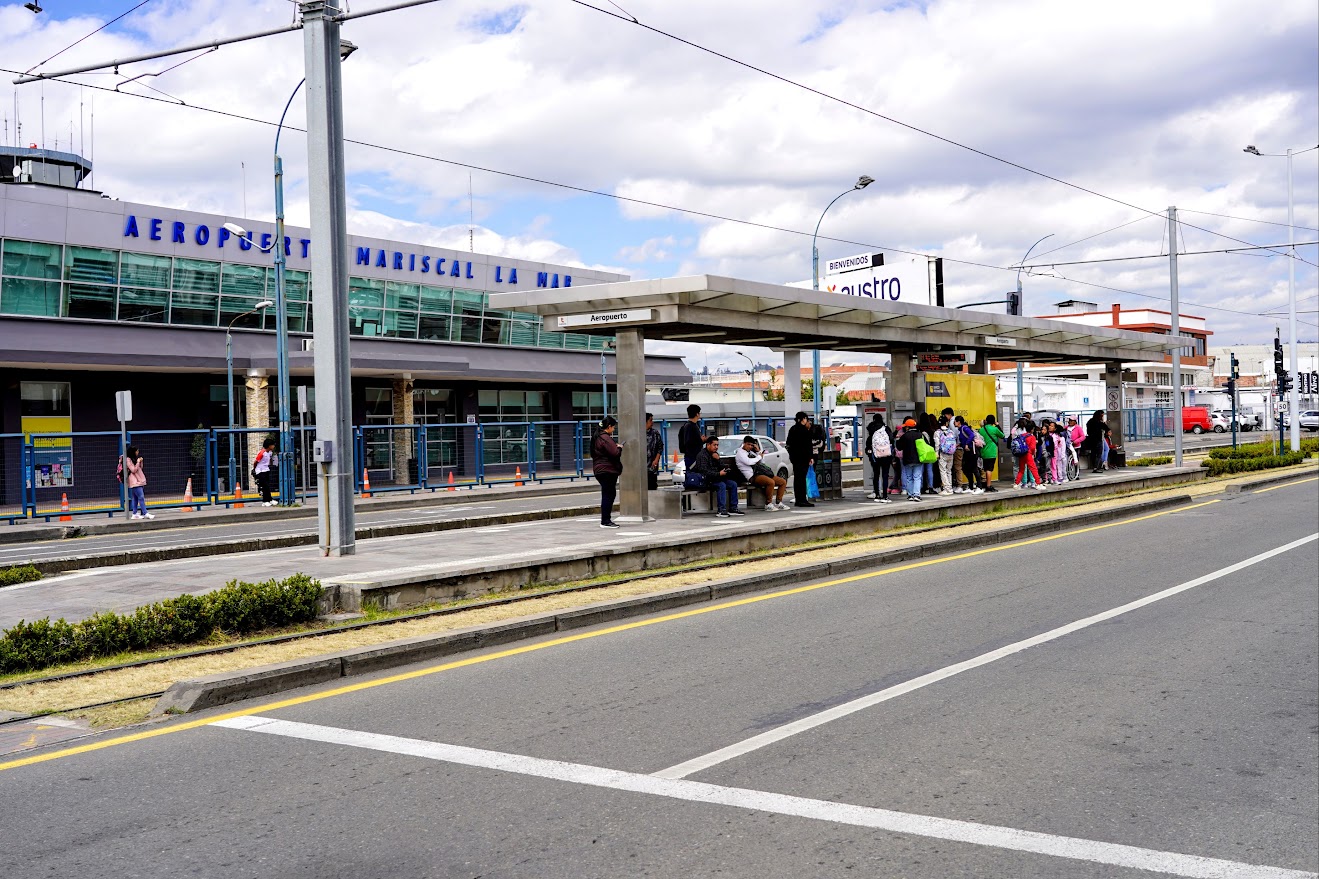
It is projected that about 540,000 passengers will use Cuenca’s airport this year. The record is 600,000 in 2011, when seven airlines served Cuenca.
Panagra was dubbed “The World’s Friendliest Airline.” It was a joint venture between Pan American World Airways and Grace Shipping Company. On February 1, 1967, Braniff purchased Panagra.
In April 1984, the small house with a turret at the edge of the runway was finally replaced. President Osvaldo Hurtado inaugurated the “modern and functional” Cuenca airport terminal.
On June 30, 2004, nighttime flights commenced. In a ceremony, the Mayor of Cuenca activated the runway lighting switches and the approach lights in the nearby mountains.
The next March, the new Mariscal La Mar airport terminal was inaugurated, in which $700,000 was spent for improvements to the building, the aircraft parking platform, and the remodeling of the parking lot.
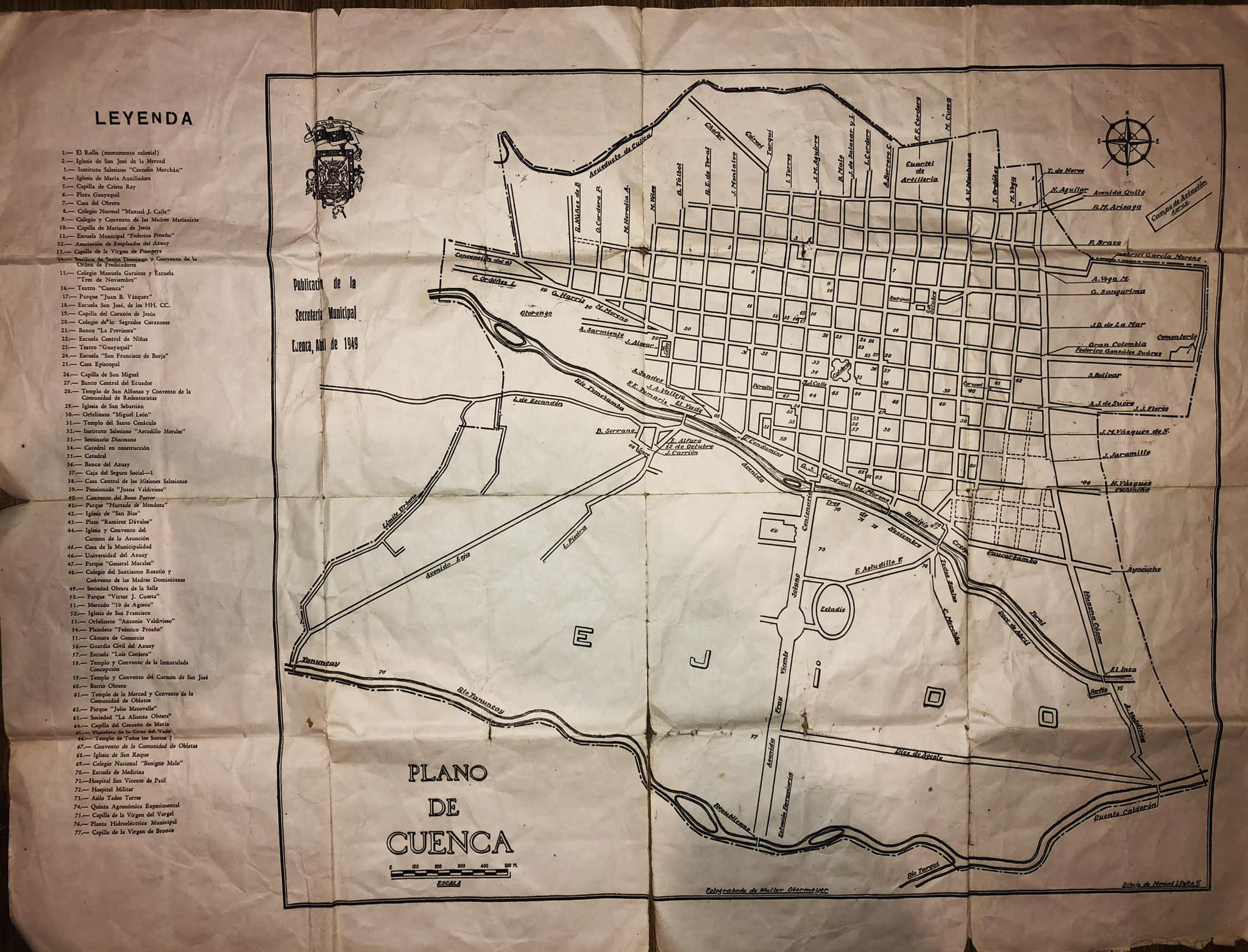
This map from 1949 shows that there was little development east of Av. Huayna Cápac. The city wrapped itself around the airport in the 1970s.
The improvements were designed for international operations, starting with flights between Cuenca and Peru, which never occurred.
A big reason for that was that the once-remote airport was no longer out in the country.
“In the 1970s, the city started growing around the airport,” said Juan Pablo Tamayo, the Commercial Director of the airport. “When Ecuador started exporting oil, it created huge growth in the country.”
Tamayo was hired in May 2023 by the Cuenca Airport Corporation (CORPAC) to help the airport move forward.
On November 15, 2005, the government gave the administration of the airport to the city of Cuenca. CORPAC was created by Ecuador’s Ministry of Production, and in April 2006, CORPAC took over the operations of the airport
The 42-year-old Tamayo got his graduate degree from Universidad de Las Américas, in Quito, to be a commercial engineer, with an emphasis on economy and finance.

LATAM has the most weekly departures with 48.
“I always worked in aviation,” said Tamayo. “My father was a pilot and manager for the airline company, Icaro Air (The company went into liquidation in June 2011). I helped dad with the paperwork and scheduling.”
His first job after graduating was scheduling helicopters for an oil exploratory company.
Tamayo went on to work for EPMSA, Quito’s airport concessions control company. He ended up as the Director of the Free Zone (a special customs area within an airport that has less strict customs regulations or no customs duties).
“I got to see the whole process for the new airport,” said Tamayo. “I went through all the zones of what was needed to build a new airport.”
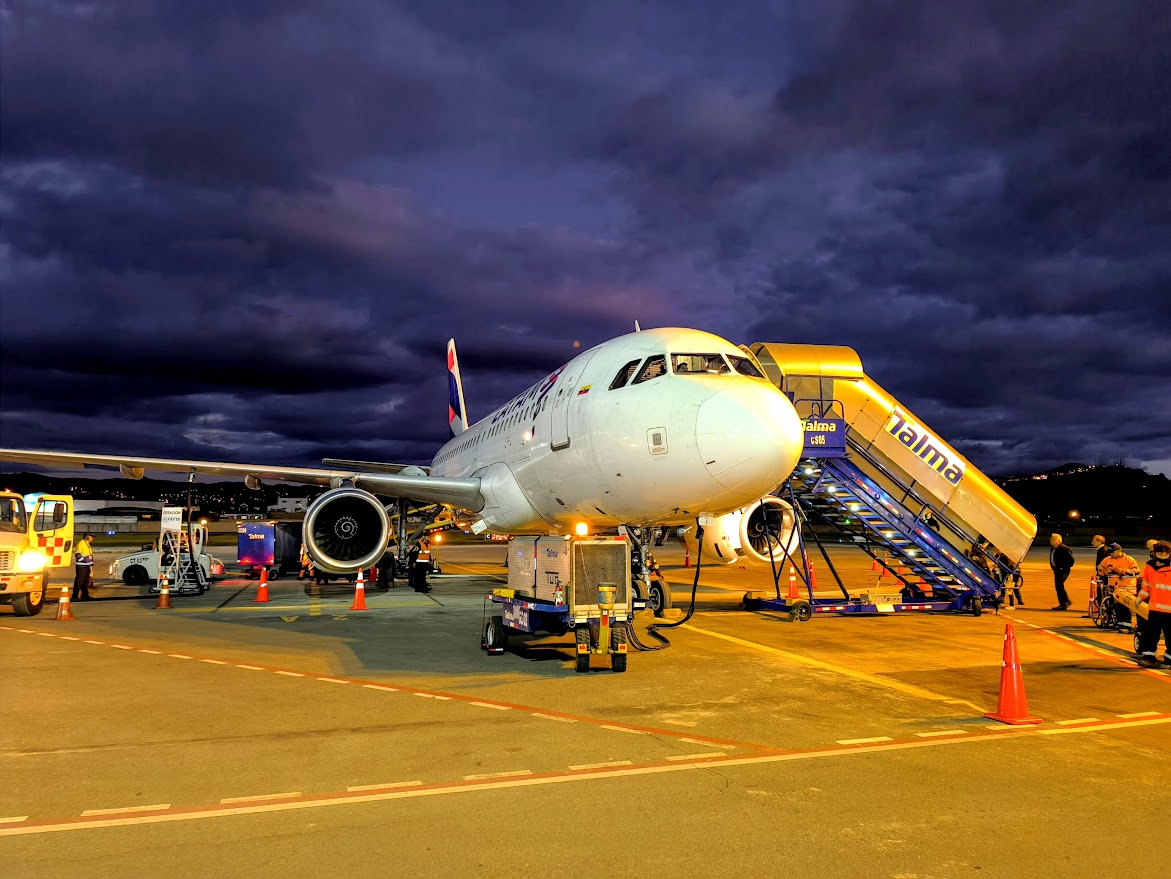
To help increase the number of passengers, the airport is working with the airlines on the layover times at Quito and Guayaquil.
After helping build the new Quito airport, Tamayo worked twice for the Ministry of Transport and was the Revenue Manager and Planning Manager for the now-defunct TAME airline.
One of Tamayo’s projects is airline service. Currently, there are 48 weekly departures from Cuenca. LATAM, the Chilean multinational airline, has 29 departures to Quito and five flights to Guayaquil. Avianca, the largest airline in Colombia, has 14 departures each week to Quito.
This is an increase from 38 flights in May 2023.
“We have really worked to have the airlines understand there is a demand that has not been fulfilled,” said Tamayo.
Airlines have a difficult time choosing new routes. A plane cannot be dedicated to just one route; they need a complete program of flights for the week.
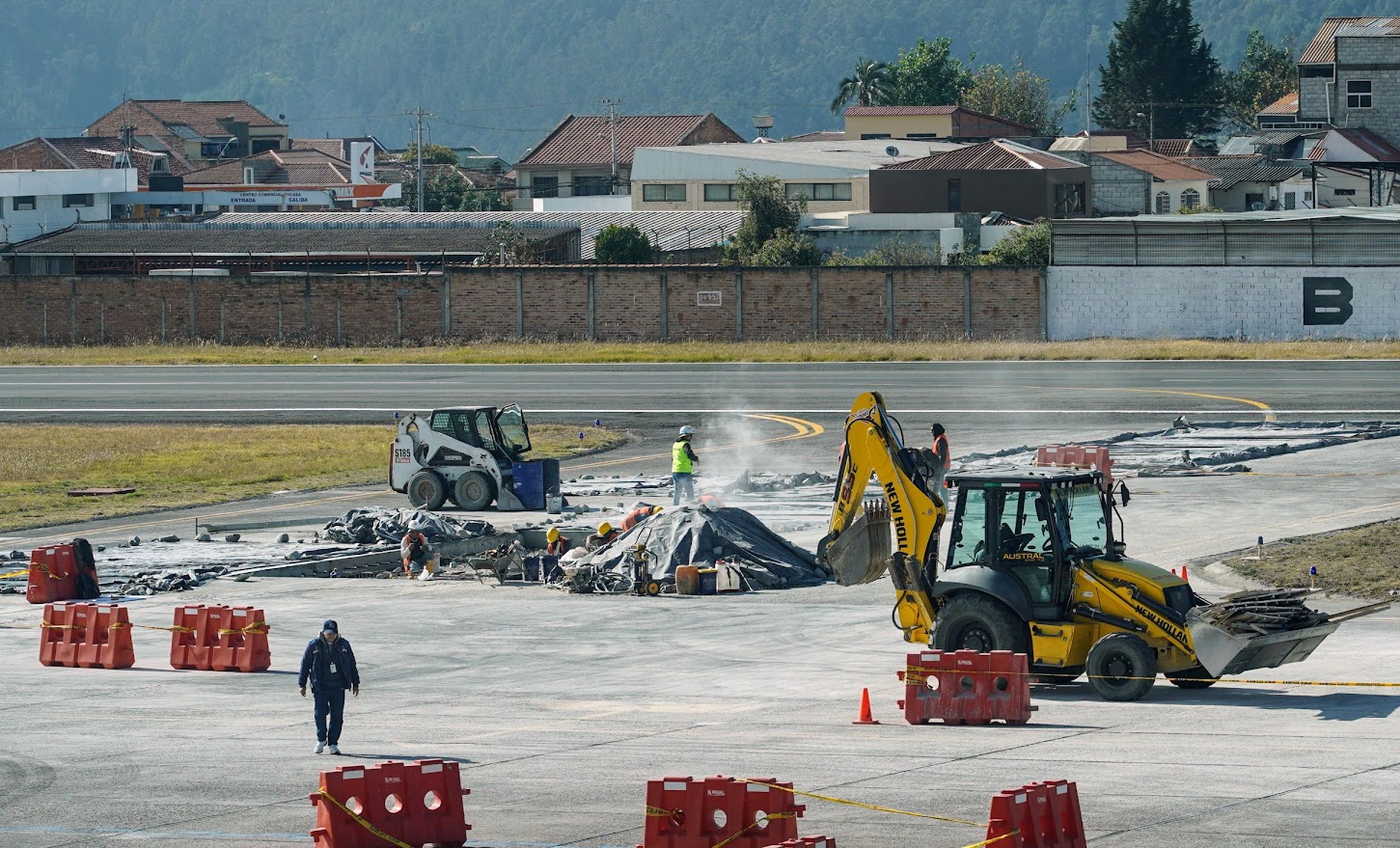
Repairs are being made to the platform (parking area for the planes). A time schedule has been set for the reconstruction of the runway.
“If you bring a new competitor, the airlines find a way to do it,” said Tamayo. “Aeroregional (a regional Ecuadorian airline) had ten flights from August 2023 to April of this year. LATAM and Avianca ‘discovered’ there was a demand.”
Aeroregional could not make it work as people did not respond to the airline. On top of that, Aeroregional could only fly their Boeing 737s half-full due to the length of the airport’s runway. A Boeing 737 weighs more than the similar Airbus A320.
There are plans to increase the number of departures.
“We are close to having LATAM go through Quito to Seymour Galápagos Ecological Airport,” said Tamayo. “We hope to have the flights by the end of the year.”
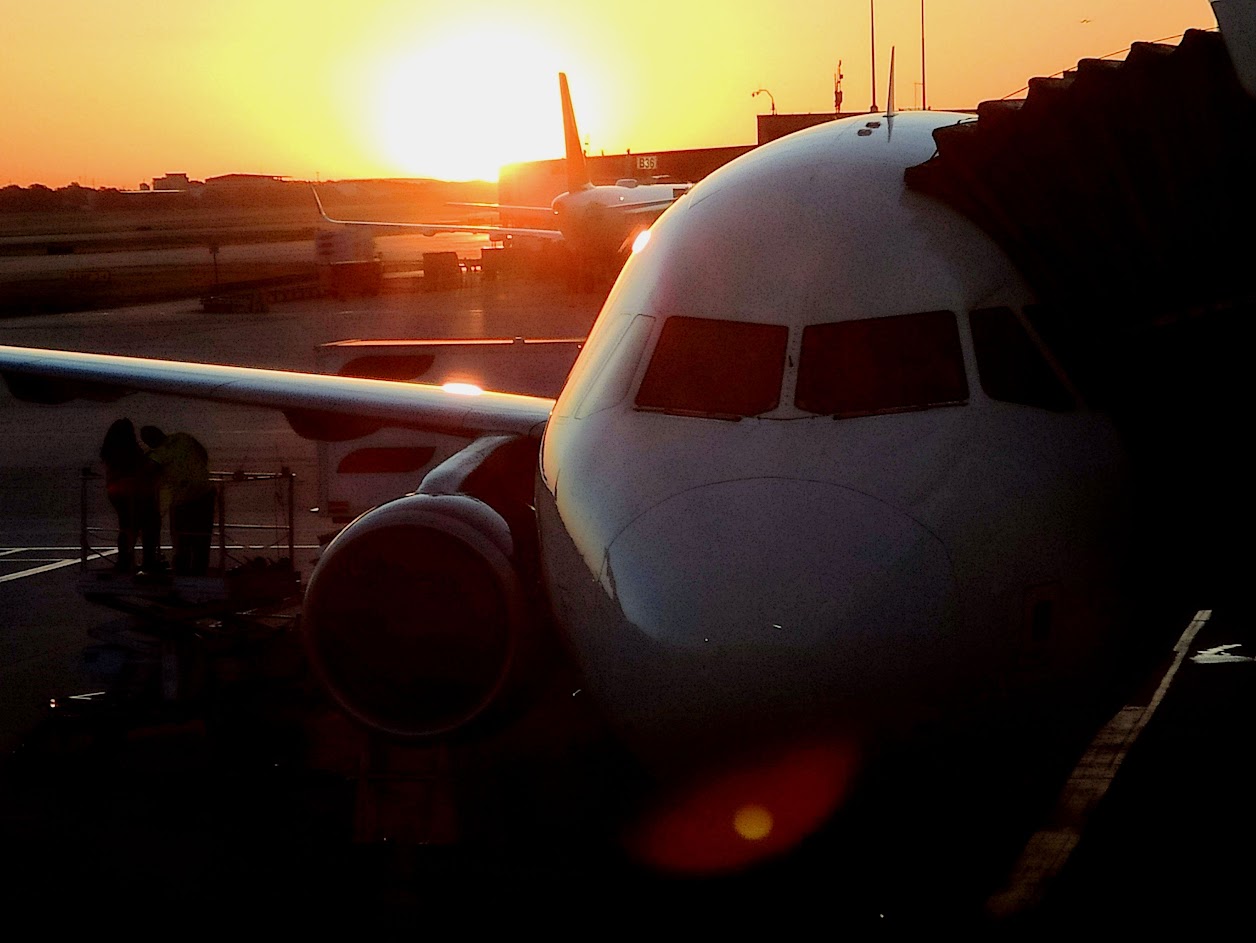
The airport is working on additional destinations, including two weekly flights to the Galápagos Islands via Quito.
It will start with two weekly flights due to limited flights to the Galápagos Islands for environmental reasons.
“Travel agencies and tour operators are thrilled about the prospect of flights to the Galápagos Islands,” said Tamayo. “They say it will bring more visitors to Cuenca as the flights will make it easier for international travelers as well as residents of Cuenca to get to the Galápagos Islands.”
To make the flights a reality, ABG has to have a place to operate at the airport. ABG is the biosecurity control and regulation agency which tries to avoid the unintentional introduction of invasive species that threaten the biodiversity of the islands.
“If we do not put in an ABG room, everyone would have to get off of the plane in Quito and have their belongings checked there,” said Tamayo.
Peru and Colombia are next for the airport.
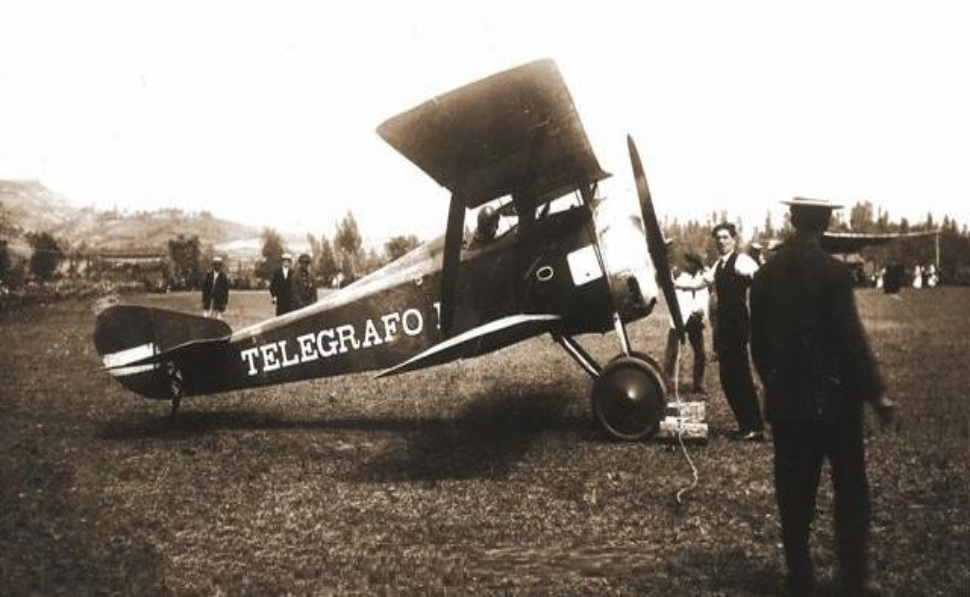
Italian pilot Elia Liut landed his small twin-engine plane, Telégrafo, in Cuenca on November 4, 1920. It was the first flight over the Andes in Ecuador.
“We are trying to build a touristic corridor of southern Colombia-Cuenca-northern Peru,” said Tamayo. “The airport is looking at Cali (Colombia’s third largest city) as well as Chiclayo, Piura, and Trujillo, in Peru.”
The airport has a great relationship with the airports in Peru. But Cali is a different story.
“We need Colombia to buy into this corridor,” said Tamayo. “We think we can make this happen.”
If Tamayo and the airport can make this a reality, it opens up a lot of possibilities for residents of Cuenca as Cali has flights to the United States and Europe.
Airport traffic has greatly increased in the last quarter-century. In 2000, 167,759 people went through Cuenca. By 2007, 487,000 passengers flew in and out of Cuenca.
“It’s not going to be a record this year, but we will have about 540,000 passengers,” said Tamayo. “The record is 600,000 in 2011, when seven airlines served Cuenca.”
The projected number of passengers would be an eight percent increase over last year. And 2023 saw a 23 percent increase over the previous year. Cuenca’s airport has an upwards trajectory for the number of passengers.
To help increase the number of passengers, the airport is working with the airlines on the layover times at Quito and Guayaquil.
“We need better connections. Our only good connections are to Miami, Lima, and Bogotá,” said Tamayo.
Because of the long layovers at Ecuador’s two largest airports, 200,000 passengers are driving to Guayaquil from Cuenca instead of flying there.
“We are losing a million dollars per year in revenue from taxes and fees because they are driving to Guayaquil,” said Tamayo. “And driving to Guayaquil is getting riskier.”
Probably the biggest plan in the works will affect everyone: runway renovations. In the second part of this series, runway repairs and terminal upgrades will be revealed.
_________________
Photos by Stephen Vargha
Stephen Vargha’s second edition of his book about Cuenca, “Una Nueva Vida – A New Life” is available at Amazon in digital and hardback formats. His award-winning blog, “Becoming Cuenca,” supplements his book with the latest information and hundreds of professional photos by him.













